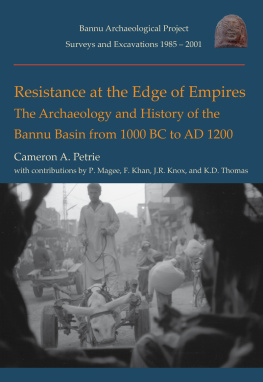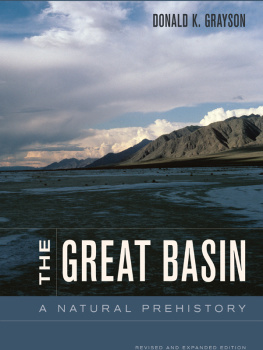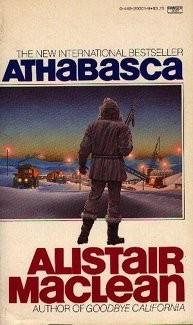Ronaghan - Albertas lower Athabasca basin: archaeology and palaeo environments
Here you can read online Ronaghan - Albertas lower Athabasca basin: archaeology and palaeo environments full text of the book (entire story) in english for free. Download pdf and epub, get meaning, cover and reviews about this ebook. City: Edmonton;AB, year: 2016;2017, publisher: Athabasca University Press, genre: Romance novel. Description of the work, (preface) as well as reviews are available. Best literature library LitArk.com created for fans of good reading and offers a wide selection of genres:
Romance novel
Science fiction
Adventure
Detective
Science
History
Home and family
Prose
Art
Politics
Computer
Non-fiction
Religion
Business
Children
Humor
Choose a favorite category and find really read worthwhile books. Enjoy immersion in the world of imagination, feel the emotions of the characters or learn something new for yourself, make an fascinating discovery.

- Book:Albertas lower Athabasca basin: archaeology and palaeo environments
- Author:
- Publisher:Athabasca University Press
- Genre:
- Year:2016;2017
- City:Edmonton;AB
- Rating:5 / 5
- Favourites:Add to favourites
- Your mark:
- 100
- 1
- 2
- 3
- 4
- 5
Albertas lower Athabasca basin: archaeology and palaeo environments: summary, description and annotation
We offer to read an annotation, description, summary or preface (depends on what the author of the book "Albertas lower Athabasca basin: archaeology and palaeo environments" wrote himself). If you haven't found the necessary information about the book — write in the comments, we will try to find it.
Ronaghan: author's other books
Who wrote Albertas lower Athabasca basin: archaeology and palaeo environments? Find out the surname, the name of the author of the book and a list of all author's works by series.
Albertas lower Athabasca basin: archaeology and palaeo environments — read online for free the complete book (whole text) full work
Below is the text of the book, divided by pages. System saving the place of the last page read, allows you to conveniently read the book "Albertas lower Athabasca basin: archaeology and palaeo environments" online for free, without having to search again every time where you left off. Put a bookmark, and you can go to the page where you finished reading at any time.
Font size:
Interval:
Bookmark:
Albertas Lower Athabasca Basin
EDITED BY BRIAN M. RONAGHAN
Copyright 2017 Brian Ronaghan
Published by AU Press, Athabasca University
1200, 10011 109 Street, Edmonton, AB T5J 3S8
ISBN 978-1-926836-90-4 (print) 978-1-926836-91-1 (PDF) 978-1-926836-92-8 (epub)
doi: 10.15215/aupress/9781926836904.01
Cover and interior design by Marvin Harder, marvinharder.com.
Printed and bound in Canada by Friesens.
Library and Archives Canada Cataloguing in Publication
Albertas lower Athabasca basin : archaeology and palaeoenvironments / edited by Brian M. Ronaghan.
(Recovering the past : studies in archaeology, ISSN 2291-6784)
Includes bibliographical references and index.
Issued in print and electronic formats.
1. Athabasca Basin (Sask. and Alta.)Antiquities. 2. Athabasca Tar Sands (Alta.)Antiquities. 3. PaleontologyAthabasca Basin (Sask. and Alta.). 4. PaleontologyAlbertaAthabasca Tar Sands. I. Ronaghan, Brian M., editor of compilation II. Series: Recovering the past (Edmonton, Alta.)
QE748.A4A43 2016 560.971232 C2012-901896-1 C2012-901897-X
We acknowledge the financial support of the Government of Canada through the Canada Book Fund (CBF) for our publishing activities.

Assistance provided by the Government of Alberta, Alberta Media Fund.

Please contact AU Press, Athabasca University at for permissions and copyright information.
INTRODUCTION
The Archaeological Heritage of Albertas Lower Athabasca Basin
Brian M. Ronaghan
1 A Tale of Two Floods
How the End of the Ice Age Enhanced Oil Sands Recoveryand Decimated the Fossil Record
James A. Burns and Robert R. Young
Timothy G. Fisher and Thomas V. Lowell
3 Raised Landforms in the East-Central Oil Sands Region
Origin, Age, and Archaeological Implications
Robin J. Woywitka, Duane G. Froese, and Stephen A. Wolfe
4 Kearl Lake
A Palynological Study and Postglacial Palaeoenvironmental Reconstruction of Albertas Oil Sands Region
Luc Bouchet and Alwynne B. Beaudoin
Grant M. Clarke, Brian M. Ronaghan, and Luc Bouchet
Brian O. K. Reeves, Janet Blakey, and Murray Lobb
7 Lower Athabasca Archaeology
A View from the Fort Hills
Robin J. Woywitka
John W. Ives
9 Beaver River Sandstone
Characteristics and Use, with Results of Heat Treatment Experiments
Eugene M. Gryba
Nancy Saxberg and Elizabeth C. Robertson
11 Microblade Technology in the Oil Sands Region
Distinctive Features and Possible Cultural Associations
Angela M. Younie, Raymond J. Le Blanc, and Robin J. Woywitka
12 Quarries
Investigative Approaches in the Athabasca Oil Sands
Gloria J. Fedirchuk, Jennifer C. Tischer, and Laura Roskowski
13 Cumulative Effects Assessment
Evaluating the Long-Term Impact of Oil Sands Development on Archaeological Resources
Brian M. Ronaghan
Albertas Lower Athabasca Basin
BRIAN M. RONAGHAN
From its headwaters in Jasper National Park, Albertas Athabasca River travels some 1,500 miles northeastward across the province, its waters ultimately flowing into Lake Athabasca. The river drains a vast regionroughly 159,000 square kilometresalong the southern margin of Canadas Boreal Plains ecozone, which encompasses much of central and northern Alberta. In contrast to the grasslands further south, the Boreal Plains ecozone is heavily forested, forming part of Canadas more broadly defined boreal forest. The Lower Athabasca basin lies wholly within the Boreal Plains ecozone, and, although some notable uplands occur, the area consists for the most part of glacial lake bed or till plain on which large tracts of muskeg and fen have developed between areas of modest elevation. Major fish-bearing lakesLake Athabasca and Lac La Bicheare situated along its northern and southwestern margins, respectively, and smaller lakes and ponds are scattered throughout the area. As with similar regions across the northern hemisphere, food resources are relatively meagre and widely distributed, traditionally supporting only comparatively small populations of hunter-gatherers. With the exception of the access afforded by the river, travel throughout the region is difficult.
Although the Lower Athabasca basin features a broad spectrum of natural resources, two classes of resource have proved to be of major commercial interest to outsiders. In 1778, explorer and trader Peter Pond arrived in the Athabasca region and established a fur trade post, thereby inaugurating an activity that would serve as the basis of the regions commercial economy for a century and a half. Pond noted the occurrence of a fluid tar-like substance (Stringham 2012, 21), which explorer and trader Alexander Mackenzie described in his journal a decade later, in 1788:
At about 24 miles from the fork [of the Athabasca and Clearwater Rivers] are some bituminous fountains into which a pole of 20 feet long may be inserted without the least resistance. The bitumen is in a fluid state and when mixed with gum, the resinous substance collected from the spruce fir, it serves to gum the Indians canoes. In its heated state it emits a smell like that of sea coal. (Mackenzie 1970, 129)
As Mackenzie noted, the Athabasca River and some of its tributaries had cut down through the surrounding bedrock, exposing bitumen along river banks in various locations to the north of modern Fort McMurray.
Aboriginal people had known of these bitumen deposits for millennia. Long before Pond arrived in the oil sands area, a Cree chief, known in historical records as the Swan, had brought them to the attention of the Hudsons Bay Company traders. In 1715, the Swan visited York Factory, where he described the Athabasca region, telling of a river on whose banks could be found Gum or pitch. Four years later, the Swan returned to York Factory, bearing a sample of that Gum or pitch that flows out of the Banks of that River, which he presented to HBC governor Henry Kelsey.
Investigation into the character, extent, and value of Albertas bitumen resources began in the 1890s. Early in the twentieth century, in an account of an expedition to the Mackenzie basin in connection with Treaty 8 (signed in 1899), Charles Mair wrote: The tar, whatever it may be otherwise, is a fuel, and burned in our camp-fires like coal. That this region is stored with a substance of great economic value is beyond all doubt, and, when the hour of development comes, it will, I believe, prove to be one of the wonders of Northern Canada (1908, 121). Mairs instinct would prove to be correct. Research was accelerated by the demand for fuel during both world wars, and in the early 1960s a commercially viable process Only in the late 1990s, however, did technical advances and high oil prices combine to make large-scale investment in recovery attractive. Interest in understanding and developing bitumen resources originated among academic researchers and in government circles, although the role of these sectors has since evolved into providing research support for, as well as oversight of, the industrial activities now underway. Information relating to the effects of oil sands development on both the natural and the social environment continues to be collected by industry for compliance and planning purposes, but this mass of information has not been synthesized or widely disseminated. It is the intent of this volume to provide an overview of the information available on a subject that bears significantly on some of the current issues in the region: the historic value of the landscapes that have already been, or may still be, irrevocably altered by development activities.
Next pageFont size:
Interval:
Bookmark:
Similar books «Albertas lower Athabasca basin: archaeology and palaeo environments»
Look at similar books to Albertas lower Athabasca basin: archaeology and palaeo environments. We have selected literature similar in name and meaning in the hope of providing readers with more options to find new, interesting, not yet read works.
Discussion, reviews of the book Albertas lower Athabasca basin: archaeology and palaeo environments and just readers' own opinions. Leave your comments, write what you think about the work, its meaning or the main characters. Specify what exactly you liked and what you didn't like, and why you think so.




